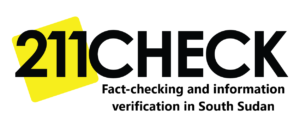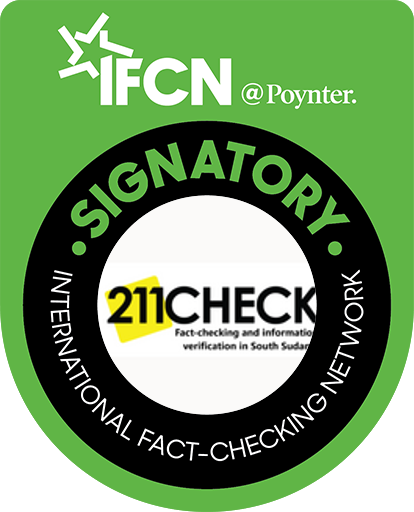How the 211 Check Desk works
At 211 Check, we write our fact-check articles, using the following process:
Claim identification: Claims are identified by 211 Check media monitors or community members.
Choose the claim: We decide what to write about based on our public interest worthiness matrix from the pool of claims gathered. Sometimes an editor will give fact-checkers assignments, but they often have to find claims to investigate. However, this route means we must work to avoid bias—fact-checkers may have strong opinions that could affect editorial conclusions.
Researching the claim: Our fact-checkers undertake research, using books, articles and other open source data that will give a full understanding of the claim. They employ tools such as Google Search, Google Reverse Image Search, Invid WeVerify, WHOIS analysis, and interviews. This is to help find background information about people, organizations, and claims being investigated.
The evaluation of the claim in light of the evidence, typically on a scale of veracity, in order to correct it.
Review: Editors go over the fact-checking draft. With the fact-checker, there can be some back and forth to agree on precise language and to collectively assess various sources. The team will have to decide which word best serves the reader when, for example, a fact-checker may urge for one that is more technically accurate and an editor may argue for one that doesn’t sound jargon-y. The team will need to decide how to best reflect this uncertainty in the fact-check or whether some of the studies are not worth citing, perhaps because their authors have significant conflicts of interest. The fact-checker may have used one study to support a point, while the editor may have discovered other credible research that contradicts it.
Make Changes: The fact-checker or the editor makes the last revisions to the document once everyone has agreed on the facts. However, the editor usually has the last say if there are any disputes.
Publishing fact-check or further investigation: After talking to sources, running background checks, having all the links ready, identifying authentic sources to support findings, and reviewing, it is time to publish about the fact-check or to decide how to include them in a further investigation.
Components of 211 Check’s fact-check
We publish a fact-check on our website and/or social media following these essential aspects to for a thorough presentation of it:
The initial statements or claims: Have the relevant claim or statement verbatim (as in, the full original statement) so that readers know what’s being verified and/or challenged. If the subject has made a series of claims, we break them into 3-4 subheads to make it digestible. Then, fact-check them one by one.
Links to sources: We provide links to the authentic sources, the experts we quote are identified and their bio linked to the text where possible. We also use tools such as www.archive.is or https://archive.org/web/ to save the links because URLs can change or break.
A summary of our findings: We summarise our findings in a sentence or two at the top and follow with the detailed write-up. It’s crucial to include the fact-checking process in the report so that anyone can replicate it.
Visual aids: Fact-checks can be text-heavy, but they shouldn’t be visually unappealing. Visuals (photos, videos, graphics or screenshots) illuminate the reports.
A final grade or verdict: At the end of the piece, we give a verdict such as false, misleading or partly-true. We sometimes also include a section at the end summarizing your findings.
How the 211 Check Desk works
Generally, the 211 Check Desk works along these lines:
- Claims come into the 211 Check Desk – this can occur in a number of ways, some of which are:
- Through our tip-lines via WhatsApp, email, social media direct messages and phone
- Through media monitoring.
- From our rumour tracking.
- From issues or stories the editors or fact-checkers themselves, want to be covered.
- As this pool of claims develops, fact-checkers are assigned stories either by editors or, in some cases, research the claims themselves.
- This is done through either phone or face-to-face interviews or the use of press releases.
- At times they may use archival material, such as old photographs, footage or sound, which is stored in written archives or on the computer by carrying out an internet investigation.
- At this time the graphic designer comes into play.
- In the 211 Check Desk, the visuals for stories can be organised through the graphic designer.
- Any graphics needed to accompany a fact-check or data story is organised and the work allocated to the graphic designer.
- Once the graphic designers return with their visuals, items are put together and the fact-check articles or data stories are completed before publication.
- At this stage, any other graphic information needed is completed or almost completed and ready for use.
- Meanwhile, the fact-checker spends time finishing their story before it is saved and sent to editors.
- At this time, fact-checkers, editors, and chief editor often meet again to review the fact-check articles and see if there are any corrections
- When fact-check articles or the data stories are completed, they are usually checked to ensure they are factually correct, make sense and adhere to the 211 Check editorial requirements.
- Editors will go through fact-check articles and often make changes to improve readability and ensure they are not misleading. Stories receive headings and photo captions are checked.
- The Managing Editor then draws the story, photograph and graphic elements together and lays them out through a computer on the web page.

Content reporting and feedback Process
- Content identification: Content and/or claim is identified by a 211 Check media monitor fellow or community member.
- Content categorization and labeling: Content and/or claim is submitted through the content submission form.
- Action by 211 Check: 211 Check content moderator evaluates the content and takes a prescribed action based on the assessment.
- Result of Action: 211 Check content moderator and/or fact-checker receives a result from a third party or senior management on the content or claim.
- Feedback to the content originator: 211 Check content moderator and/or fact-checker provides feedback to the content originator.
- Steps 1 & 2 are evicted by 211 Check’s media monitors by filling the content form
- Steps 3, 4, and 5 are done by the Content moderator and will be recorded in the content sheet, refer to columns J to P on this sheet.
Content/Claim Public interest worthiness matrix:
We choose claims to be fact-checked or verified based on the following matrix:
- Virality: the tendency of an image, video, or piece of information to be circulated rapidly and widely from one Internet user to another; the quality or fact of being viral.
- Harmfulness (Likelihood to cause harm): Does the piece of information have content that will likely cause immediate physical or emotional harm to an individual or a group? Does the content contain information that incites violence against a community or an individual?
- Believability: Given that the content is false, how likely is it for the general public and social media users to believe it. (i.e skilled photoshopped picture vs an image with just a caption on it. Piece of info that has some facts mixed with false information making it harder to distinguish).
- Factualness: How factual is the piece of information? Is it based on a well-established source and reported the body of knowledge or it is based on opinions and inaccurate claims?
- Fact-checkable or not? Can the content or report be fact-checked or verified using publicly available evidence or data?

